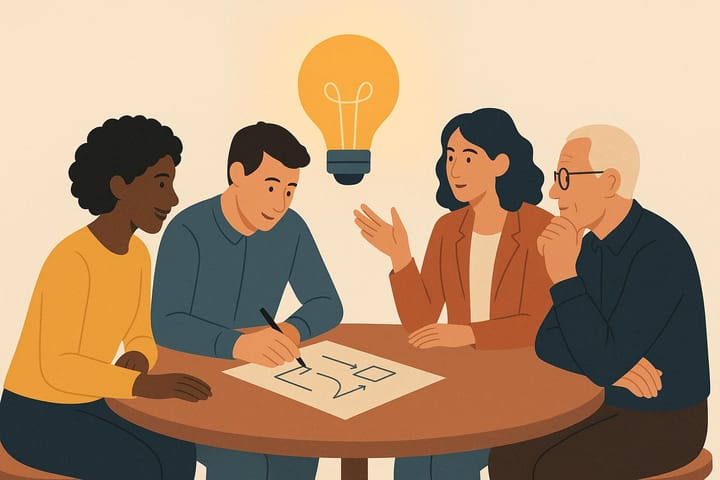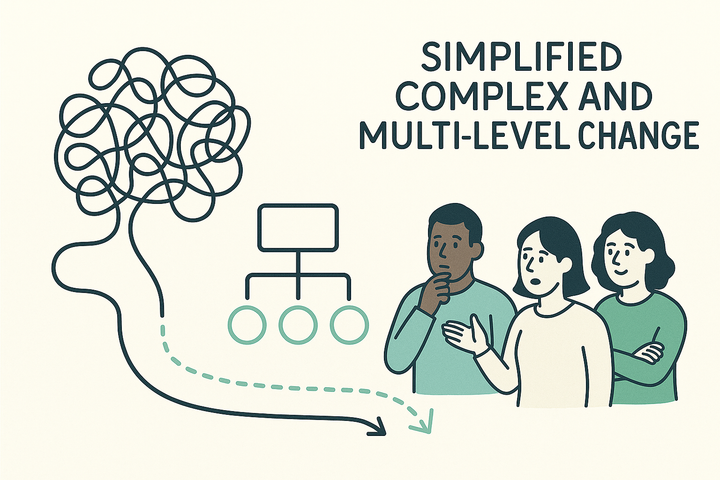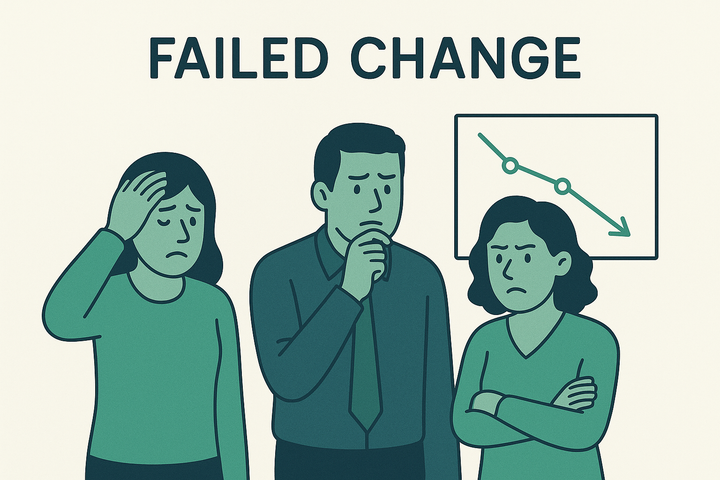Activating Behaviour During Change
The measure of any change isn’t what people say—it’s what they do. This article explores how to activate behaviour change through communication, with theory, tactics, and practical insight.

The ultimate test of any change effort is this:
Did people do something differently as a result?
Because the point of change isn’t awareness. Or understanding. Or even alignment. It’s behaviour.
And if nothing changes in how people act, then the change hasn’t landed.
That’s where behavioural activation comes in.
It’s the third pillar in our change communication model, after sensemaking and alignment. And it’s the one that takes your strategy off the slide and into the system.
What is Behavioural Activation in Change?
Behavioural activation is the deliberate process of helping people take new actions in response to change. Not just understand it. Not just agree with it. But do something about it.
It’s rooted in behavioural science, where activation refers to the specific conditions, prompts, and supports that move people from intention to action. In other words: the nudge, the cue, the trigger, the reinforcement.
In change communication, behavioural activation is the bit where the rubber meets the road.
The Theory Behind It
There are a few big ideas that underpin this:
- Theory of Planned Behaviour — People’s actions are shaped by attitudes, perceived norms, and perceived control. If the new behaviour feels unclear, unsupported, or socially risky, people won’t do it.
- BJ Fogg’s Behaviour Model — Behaviour happens when motivation, ability, and a prompt align. If any one of those is missing, nothing changes.
- Activation Energy (from psychology) — People need a lower “activation threshold” to move into action. Clear direction, ease of access, and social proof all help reduce the resistance.
What this means practically: you can’t just tell people what’s changing and hope they’ll figure out how to behave differently. You have to support the action, lower the barriers, and model the behaviour.
Why It’s the Necessary End Point of Change
Here’s the hard truth: people won’t remember most of your messages. But they will remember what they had to do differently because of them.
Change only becomes real when it’s embodied—when people act differently, prioritise differently, and make decisions differently.
That’s why behavioural activation is the endpoint of the alignment pathway. It’s what all the strategy, comms, and engagement are building toward.
And if you skip this step—if you “announce the change” without activating it—you’ll end up with surface agreement and deep inertia.
Activation Without Engagement? It Won’t Stick.
This is where a lot of change efforts go sideways. Organisations focus on the comms—what to say, how to say it—but neglect engagement.
Here’s the difference:
- Communication tells people what’s happening.
- Engagement gives them a role in shaping it.
- Activation makes it real through action.
You need all three. But engagement is the bridge. It’s what transforms passive recipients into active participants.
People support what they help shape. And when they’ve been engaged early and meaningfully, they’re far more likely to act with purpose.
You might also want to read:
- How to Communicate Change
- The Sensemaking–Alignment–Activation Model
- Sensemaking in Change Communication
- Creating True Alignment for Organisational Change
- Activating Behaviour During Change
So What Does Activation Look Like?
It might mean:
- Reinforcing new behaviours with storytelling, feedback loops, and real-time recognition.
- Creating visible cues and nudges in the environment.
- Aligning incentives and rituals to reward what’s changing.
- Equipping leaders to model the new behaviours, not just talk about them.
- Designing communication that’s not just informative but action-oriented—inviting, guiding, and supporting people to take the next step.
Activation is where communication and culture meet. It’s the moment the message becomes movement.
If You’re Communicating Change, Ask Yourself:
- What specific behaviours are we trying to activate?
- What do people need to do, not just understand?
- What will make it easier, safer, or more rewarding to act?
- Are we equipping managers and leaders to lead by doing?
- Have we engaged people meaningfully along the way?
If You’ve Communicated the Change But Nothing’s Happening…
You might not have an alignment issue. You might have an activation one.
The Sound & Signal Review can help you diagnose whether your communication is leading to action or just noise.
Or, if your programme is lagging and energy is dropping, the Rapid Action Accelerator is designed to get stuck teams unstuck and create quick traction.



